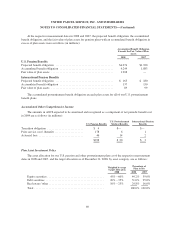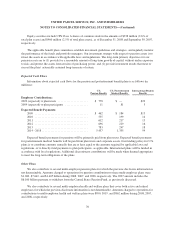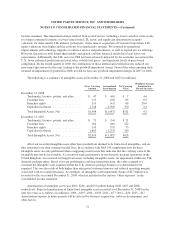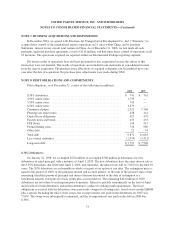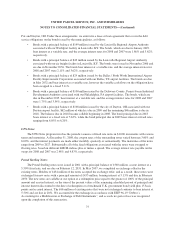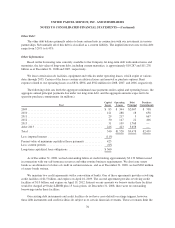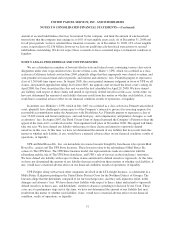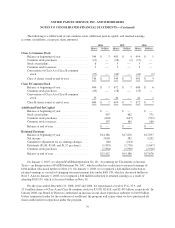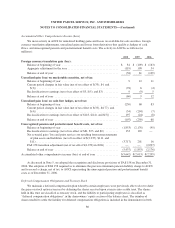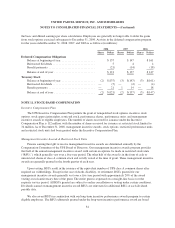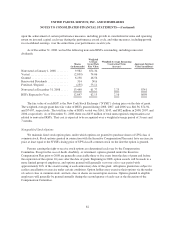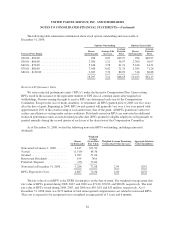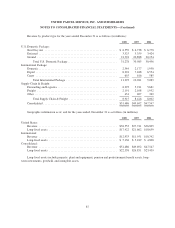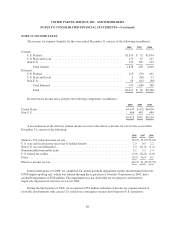UPS 2008 Annual Report Download - page 89
Download and view the complete annual report
Please find page 89 of the 2008 UPS annual report below. You can navigate through the pages in the report by either clicking on the pages listed below, or by using the keyword search tool below to find specific information within the annual report.UNITED PARCEL SERVICE, INC. AND SUBSIDIARIES
NOTES TO CONSOLIDATED FINANCIAL STATEMENTS—(Continued)
We are a defendant in various other lawsuits that arose in the normal course of business. We believe that the
eventual resolution of these cases will not have a material adverse effect on our financial condition, results of
operations, or liquidity.
As of December 31, 2008, we had approximately 260,000 employees employed under a national master
agreement and various supplemental agreements with local unions affiliated with the Teamsters. In September
2007, we reached a new national master agreement with the Teamsters, which was ratified in December 2007.
The new agreement provides for wage increases as well as contributions to healthcare and pension plans, and
most economic provisions of the new five year agreement took effect on August 1, 2008, with the exception of
our withdrawal from the Central States Pension Fund which occurred in 2007. We have approximately 2,900
pilots who are employed under a collective bargaining agreement with the Independent Pilots Association, which
becomes amendable at the end of 2011. Our airline mechanics are covered by a collective bargaining agreement
with Teamsters Local 2727, which became amendable in November 2006. We began formal negotiations with
Teamsters Local 2727 in October 2006. In addition, the majority of our ground mechanics who are not employed
under agreements with the Teamsters are employed under collective bargaining agreements with the International
Association of Machinists and Aerospace Workers (approximately 3,000). These agreements run through
July 31, 2009.
We participate in a number of trustee-managed multi-employer pension and health and welfare plans for
employees covered under collective bargaining agreements. Several factors could cause us to make significantly
higher future contributions to these plans, including unfavorable investment performance, changes in
demographics, and increased benefits to participants. At this time, we are unable to determine the amount of
additional future contributions, if any, or whether any material adverse effect on our financial condition, results
of operations, or liquidity would result from our participation in these plans.
NOTE 10. SHAREOWNERS’ EQUITY
Capital Stock, Additional Paid-In Capital, and Retained Earnings
We maintain two classes of common stock, which are distinguished from each other by their respective
voting rights. Class A shares of UPS are entitled to 10 votes per share, whereas Class B shares are entitled to one
vote per share. Class A shares are primarily held by UPS employees and retirees, and these shares are fully
convertible into Class B shares at any time. Class B shares are publicly traded on the New York Stock Exchange
(NYSE) under the symbol “UPS.” Class A and B shares both have a $0.01 par value, and as of December 31,
2008, there were 4.6 billion Class A shares and 5.6 billion Class B shares authorized to be issued. Additionally,
there are 200 million preferred shares, with no par value, authorized to be issued; as of December 31, 2008, no
preferred shares had been issued.
78



